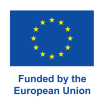Matoga Dariusz

Address/Country
Gronostajowa 2, 30-387 Kraków,
Poland
Institution name and department
Jagiellonian University in Kraków, Faculty of Chemistry
Position held
University Professor
Key words
- metal-organic frameworks
- protonic conductors
- functional materials
- sensors
- coordination chemistry
Areas of Research/Expertise
Our current research interest is focused on the design and synthesis of new functional metal-organic frameworks (MOFs) with targeted properties which are determined by a wide range of physical techniques of characterization. The latter includes crystal structure determinations which are correlated with several properties of MOFs (e.g. adsorption properties, conductivity, switchability, etc.). Applications of MOFs, i.e. porous coordination polymers with organic linkers are largely a consequence of their porosity and include areas such as: hydrogen and other gases storage, separations, CO2 capture, molecular recognition, catalysis, charge transport, sensing and adsorption/release of drugs.
At present we focus on MOFs for charge transport (e.g. proton conduction) and sensing (e.g. luminescence- and conductivity-based sensing of selected gaseous and liquid-phase analytes).
Naturally, we are interested in applying mechanochemistry for various stages of materials' preparations.
5 Most representative publications related to Mechanochemistry
- D. Matoga*, M. Oszajca, M. Molenda, „Ground to conduct: mechanochemical synthesis of a metal-organic framework with high proton conductivity", Chem. Commun., 2015, 51, 7637-7640. DOI: 10.1039/c5cc01789k.
- K. Roztocki, D. Jędrzejowski, M. Hodorowicz, I. Senkovska, S. Kaskel, D. Matoga*, „Isophtalate-hydrazone 2D zinc-organic framework: crystal structure, selective adsorption and tuning of mechanochemical synthetic conditions", Inorg. Chem., 2016, 55, 9663-9670. DOI: 10.1021/acs.inorgchem.6b01405.
- D. Matoga*, K. Roztocki, M. Wilke, F. Emmerling, M. Oszajca, M. Fitta, M. Bałanda, „Crystalline bilayers unzipped and rezipped: solid-state reaction cycle of a metal-organic framework with triple rearrangement of intralayer bonds", CrystEngComm, 2017, 19, 2987-2995. DOI: 10.1039/C7CE00655A.
- K. Roztocki, M. Lupa, A. Sławek, W. Makowski, I. Senkovska, S. Kaskel, D. Matoga*, „Water-stable metal-organic framework with three hydrogen-bond acceptors: versatile theoretical and experimental insights into adsorption ability and thermo-hydrolytic stability", Inorg. Chem. 2018, 57, 3287–3296. DOI: 10.1021/acs.inorgchem.8b00078.
- K. Roztocki, M. Szufla, M. Hodorowicz, I. Senkovska, S. Kaskel, D. Matoga*, "Introducing a longer versus shorter acylhydrazone linker to a metal-organic framework: non-isoreticular structures, diverse stability and adsorption properties", Cryst. Growth. Des. 2019, 19, 7160-7169, DOI: 10.1021/acs.cgd.9b01031.
5 Most representative publications non-related to Mechanochemistry
- D. Matoga*, J. Szklarzewicz, K. Stadnicka, M. S. Shongwe*, „Iron(III) complexes with a biologically relevant aroylhydrazone: crystallographic evidence for coordination versatility”, Inorg. Chem., 2007, 46, 9042-9044. DOI: 10.1021/ic701435x.
- D. Matoga*, J. Szklarzewicz, R. Gryboś, K. Kurpiewska, W. Nitek, „Spacer-dependent structural and physicochemical diversity in copper(II) complexes with salicyloyl hydrazones: a monomer and soluble polymers”, Inorg. Chem., 2011, 50, 3501-3510. DOI: 10.1021/ic1024586
- 3. M. S. Shongwe*, S. H. Al-Rahbi, M. A. Al-Azani, A. A. Al-Muharbi, F. Al-Mjeni, D. Matoga, A. Gismelseed, I. A. Al-Omari, A. Yousif, H. Adams, M. J. Morris, M. Mikuriya, „Coordination versatility of tridentate pyridyl aroylhydrazones towards iron: tracking down the elusive aroylhydrazono-based ferric spin-crossover molecular materials”, Dalton Trans., 2012, 41, 2500-2514. DOI: 10.1039/C1DT11407G.
- D. Matoga*, B. Gil, W. Nitek, A. D. Todd, C. W. Bielawski, „Dynamic 2D manganese(II) isonicotinate framework with reversible crystal-to-amorphous transformation and selective guest adsorption”, CrystEngComm., 2014, 16, 4959-4962. DOI: 10.1039/C4CE00647J.
- K. Roztocki, F. Formalik, A. Krawczuk, I. Senkovska, B. Kuchta, S. Kaskel, D. Matoga*, "Collective breathing in an eightfold interpenetrated metal-organic framework: from mechanistic understanding towards threshold sensing architectures", Angew. Chem. Int. Ed., 2020, 59, 4491-4497. DOI: 10.1002/anie.201914198.
Orcid ID/Google Scholar/Researchgate/Scopus profiles
Orcid ID: https://orcid.org/0000-0002-0064-5541
Google Scholar: -
Researchgate: -
Scopus profiles: -

